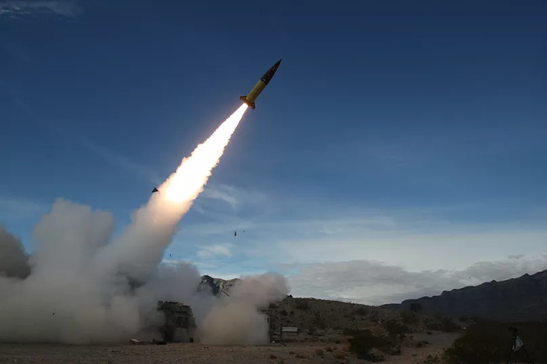
A Change in the Global Order of Military Superiority
What is Oreshnik? It’s a Russian word with two meanings. The first reference is to the hazel tree or the hazelnut from that tree. The second reference is to a revolutionary new missile system that Russia has fired at Ukraine.
The meanings are not unconnected. The ability of the Oreshnik missile to spread out into twenty or more warheads each with its own path is said to resemble the spread of leaves and branches of the hazel tree. Instead of bearing fruit in the form of hazelnuts, the Oreshnik brings utter destruction to targets in its path. That result has radically changed the nature of warfare.
How We Got To This Point
Before describing the Oreshnik missile in more detail, it helps to recall the recent history involving the U.S., Russia and Ukraine that led to the current dangerous state of affairs.
In 2008, George W. Bush announced that Ukraine and Georgia should join NATO. Within months, Russia invaded Georgia, making it clear that a red line had been crossed. In November 2013, the U.S. and UK launched a “color revolution” in Ukraine, used Ukrainian neo-Nazis to kill over 100 innocent protestors, overthrew a duly-elected president of Ukraine and installed an anti-Russian puppet regime. Weeks later, Russia invaded Ukraine’s Crimean Peninsula and annexed that territory to the Russian Federation.
In 2015, Russia and the U.S. and certain NATO allies negotiated the Minsk Agreements to bring peace to Ukraine. But the West negotiated in bad faith and later revealed they had no intention of living up to the Agreements. The period 2016-2022 was marked by a continual state of war between Ukrainian neo-Nazis (backed by the U.S.) and the Russian-speaking populations in the Donbas region of Ukraine. In 2019, Donald Trump was impeached for merely suggesting that U.S. aid to the Ukrainian neo-Nazis should be delayed.
Finally, in 2022, Russia invaded the Donbas to support the Russian speakers who were under siege from Kyiv. The war in Ukraine ever since has been marked by continual escalation whereby the U.S. and NATO supplied more advanced weapons which have all failed, and Russia responded with its own highly advanced weapons, which have succeeded brilliantly.
The result is that Russia has annexed four provinces of Ukraine (Donetsk, Luhansk, Kherson and Zaporizhzhia) and is advancing across the entire battlefront. Russia may soon annex two further provinces – Odesa and Sumy. Russia is also annihilating the Ukrainians who invaded the Kursk region of Russia last summer.
The Shock Heard Around The World
None of these adverse developments have halted U.S. and NATO escalation. The latest provocation involves the launching of U.S. ATACMS missiles as well as UK Storm Shadow cruise missiles and French SCALP cruise missiles at targets several hundred miles deep inside Russia. It was easy to predict that Russia would respond in its own way.
In fact, Russia’s response shocked the world. On November 21, Russia fired a new weapon at the Yuzhmash defense plant in the Ukrainian city of Dnipro that was unlike any weapon ever seen. It was a missile that was initially mistaken for an ICBM, a weapon reserved for strategic use with nuclear warheads. The missile was soon identified by the Russian Defense Ministry as a new Intermediate Range Ballistic Missile (IRBM) called Oreshnik. The Oreshnik appears to be an updated version of the RS-24 and RS-26 Rubezh IRBMs developed in the 2010s.

Destruction By Escalation Defined
Russia’s Oreshnik missile was launched in response to Biden’s approval of ATACMS missile attacks deep inside Russia. Biden also gave the green light to attacks aimed at Russia using UK Storm Shadow and French SCALP cruise missiles. Biden’s escalation is consistent with his seeming desire to cause World War III. The Oreshnik travels at Mach 10+, delivers multiple warheads and can reach London from Russia in 20 minutes. There is no defense.
The capabilities of the Oreshnik are astounding. It travels at Mach 10, about 7,000 miles per hour, 92 miles per minute or 2 miles per second. It can strike London in 20 minutes from its launch facility in Sary Shagan, Russia. Its warhead carries as many as six multiple independently targetable vehicles (MIRVs). Each MIRV carries as many as ten smaller MIRVs. (The exact number of large and small MIRVs inside the warhead bus is unknown).
This means a single missile can strike as many as sixty targets. Each small MIRV can take the form of a hypersonic glide vehicle (HGV), so that even after releasing the MIRVs, the warheads continue at hypersonic speed.
The Oreshnik fired at Dnipro was not armed with nuclear warheads, but it could easily be adapted to do that. Indeed, the warheads are estimated not to contain any explosive material at all. That may be why no fireballs were seen when the warheads struck.
Instead, the Oreshnik HGVs rely on kinetic force and extreme heat to produce the destructive power that would otherwise be done by explosives. While the exact dynamics of the kinetic impact are not fully confirmed, it appears that warhead simply generates a seismic shock equal to the detonation of 5 metric tonnes (about 11,000 pounds) of TNT. This shock hits with a temperature of 4,000 degrees Celsius (7,332 degrees Fahrenheit).
The combination of force and temperature liquifies the soil around the point of impact and creates a kind of “soil tsunami” with underground shock waves emerging as surface seismic waves (a Rayleigh wave) that destroys everything in its vicinity (the elastic deformation zone).
The warheads went deep into the earth upon impact. The destruction was no less complete than a massive surface explosion. One eyewitness said, “Yuzhmash is gone. It hit so hard that everyone just threw up their hands. It was like God sent us his arrows. People went to the plant to find out what happened – but it simply wasn’t there. There were no workshops, only dust remained.”
None of the underground command bunkers in Kyiv are safe from the Oreshnik.
A Paradigm Shift in Offensive Warfare
We have also just witnessed another step up the escalation ladder to nuclear war first posited by the theorist Herman Kahn in the 1960s.
Later on November 21, President Putin of Russia gave a lengthy statement in a televised address from the Kremlin. Putin reportedly used a desk and chair once used by Stalin to announce important victories in World War II, a fact not lost on everyday Russians. Putin said that the war in Ukraine has now become a “global conflict.”
U.S. and NATO missile attacks on Russia continued into late November. On November 29 a Russian missile counterattack struck a Ukrainian missile launch center staffed by U.S. and other NATO technicians. The Russian missile was not an Oreshnik, but Russia has a large arsenal of other hypersonic missiles capable of precision strikes and massive damage. The launch center was destroyed, and it is highly likely (but not yet confirmed) that U.S. military personal possibly posing as non-uniformed mercenary “contractors” were killed.
The escalation continues. For Biden, nuclear war is the endgame.
Why should these technical developments in missile technology matter to investors? Because these developments are not incremental. They are revolutionary. The Oreshnik missile represents a paradigm shift in offensive warfare. The West has nothing comparable and no defense against it.
The tactical use of nuclear weapons has always been a red line since the U.S. first conducted nuclear war against Japan in August 1945. Of course, the use of strategic nuclear weapons signals the end of civilization, but even tactical nuclear weapons were considered unacceptable.
The Oreshnik blurs that red line. It has the accuracy and much of the destructive force of a tactical nuclear weapon without the radiation and collateral damage. The Oreshnik missile is so fast and so powerful that it may have made tactical nuclear weapons obsolete. Why use nukes when you can get massive, targeted destruction in minutes without radioactive fallout?
Markets Beware
That being the case, the Oreshniks will be used. Putin has already threatened to use Oreshniks against “decision making centers” in Kyiv. That’s a reference to the underground bunkers used by the political and military leadership of Ukraine. The war in Ukraine could be over even faster than the most objective analysts expect.
Russia has also publicly identified U.S. and NATO command centers in Poland that are used to program and guide the intermediate-range and cruise missiles being launched into Russia. Putin has said those bases could be attacked if the missile attacks on Russia continued.
Of course, Poland is a NATO member and such an attack by Russia could trigger Article V of the NATO treaty, which requires all members to come to the aid of any member under attack. This sequence is the short path to World War III. Joe Biden seems determined to test these limits.
Investors need to be prepared for a world where the U.S. is no longer the leader in military technology. Russia will decide when its geopolitical goals are met, and the U.S. is in no position to dictate those terms to Russia. This new reality will be reflected in foreign exchange markets, stock market volatility, and even markets for U.S. Treasury securities. Importantly, the political paradigm shift will be reflected in the price of gold.
Want More The Situation Report with Jim Rickards?
Do you like this content? Would you like to know more? Because we have this and much more to share with you. Get started today!









